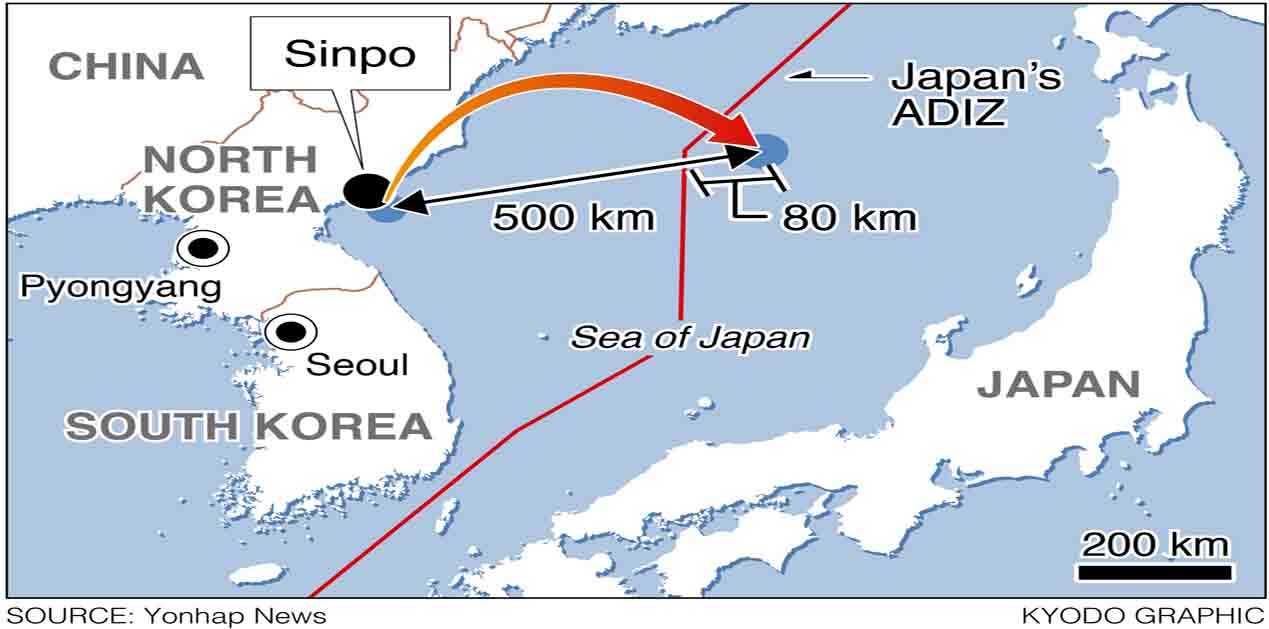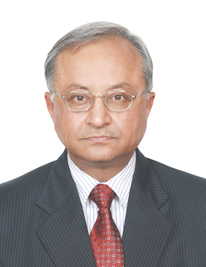In the last six weeks the long simmering North Korean question has escalated to a crisis and has brought North East Asia on the brink of a nuclear disaster.
North Korea embarked on the path of seeking nuclear weapon capacity in late 1980’s. During Prime Minister Benazir Bhutto’s visit to Pyongyang in 1993, the two countries started their clandestine collaboration with Pakistan providing Uranium enrichment technology in exchange of missile technology. The Gauri and Shaheen missiles of Pakistan are based on the Nodong and Taepodong missiles of North Korea.
In the 1990s Clinton Administration attempted to limit the growth of North Korean nuclear program with an Agreed Framework of Co-operation in 1994, in which North Korea agreed to freeze its nuclear weapons program in exchange of two light water reactors to be financed by United States (US) and South Korea. When President George Bush took a hard line against North Korea, designating it in 2002 as a member of the ‘Axis of Evil’, the Framework Agreement collapsed. The route of fresh negotiations was adopted with Six Party Talks (SPT) under the auspices of China in which US, the two Koreas, Japan and Russia were the other participants. The SPT went on in fits and starts with North Korea using the time to develop the required technology, materials and systems. North Korea’s first nuclear test on 9 October 2006 took the world by surprise and led to the demise of the SPT.
The young leader Kim Jong-un took over in December 2011, and he has steadfastly adhered to the nuclearization path of his father Kim Jong-il. The number and frequency of missile tests has increased dramatically. The destructive power of the underground nuclear tests has also been increasing steadily. With increasing range of its missiles, North Korea had acquired the capacity for a nuclear strike up to Guam, Japan and South Korea long back. Whether North Korea has been able to miniaturise its nuclear warhead to fit on a missile, particularly an Inter-Continental Ballistic Missile (ICBM), is still debatable with no hard evidence available with International Atomic Energy Agency (IAEA) or any other expert agency. It is clear that the recent tests - both of missiles and nuclear weapons - are aimed to validate capacity for a nuclear strike on mainland United States. After the 28 July missile test North Korea publicly claimed that it was the test of an ICBM which can hit the US cities.
The first move to usher-in accelerated progress of North Korea in its missile and nuclear weapons program came on 4 July, the American Independence Day, with the test of an ICBM which could have a range of 4160 miles. This was followed by another test on 28 July which was also claimed to be an ICBM. The international community, led by the US, reacted strongly and on 5 August 2017 the UN Security Council unanimously passed a resolution imposing tough new economic sanctions against North Korea. Exports of coal, iron ore, seafood etc. from North Korea were banned which would reduce North’s total exports of US $ 3 billion by US $ 1 billion. US demand for banning export of petroleum products was not agreed to by China and Russia. Strong warnings were issued by President Donald Trump as he had repeatedly affirmed that North Korea would not acquire the capacity for a nuclear strike on mainland US on ‘my watch’. He threatened North Korea with ‘fire and fury’, but for a couple of weeks after 10 August it appeared that there was some cooling of tempers on both sides.
In this rhetorical war of words between US and North Korea, the third party is South Korea which would suffer catastrophic destruction in case of any war between its ally US and North Korea. In his conversations with President Donald Trump and US officials, the South Korean President made his reservations known on war being considered an option to compel North Korea to reverse its course. On completion of 100 days on of his administration on 16 August, liberal South Korean President Moon Jae-in said that US President had promised to seek Seoul’s approval before pursuing any option against nuclear-armed North Korea. He added that, “I say this with confidence that there will be no war on the Korean peninsula ever again.” The strong position taken by the South Korean President takes the option of war off the table for the United States and its allies. There is little chance of North Korea initiating a war as its objective is to seek nuclear deterrence against the US and not against any immediate territorial ambitions.
But the hopes for some relaxation in tensions in North East Asia quickly vanished when on 28 August North Korea fired an alleged ICBM over the Hokkaido island of Japan, thus directly threatening the security of Japan. Earlier, North Korea had threatened to launch a number of missiles into the sea near the American territory of Guam. North Korea was leveraging the differences between South Korea and the US and indirectly conveying to South Korea that the South Korean territory was not in the cross hairs of North Korean weaponry. With the 3 September 2017 test of a claimed Hydrogen Bomb, the North Korean nuclear question has now entered a decisive phase. This test was the most powerful of the six nuclear tests by North Korea with an estimated capacity of more than 100 kilotons – at least five times more destructive than the bomb dropped on Hiroshima in August 1945. North Korea has repeatedly and brazenly defied the numerous UN Security Council resolutions, dire US warnings and the Chinese entreaties. It is evident that North Korea is now a nuclear weapons equipped state with a delivery capacity to hit the 10000 US troops in Guam, 50000 US troops in Japan and 28500 US troops in South Korea.
With South Korea’s strong opposition to any pre-emptive strike on the North, there are now only two options before the international community. The first option is for the UN Security Council to apply crippling sanctions on North Korea. To be effective, these will have to include a ban of export of all petrol, oil, kerosene and lubricants which comes almost exclusively from China. The vital question is whether China will co-operative with the US? On 6 September, President Donald Trump had a telephone talk with President Xi Jin-ping. According to President Trump, the Chinese President “agreed to take further action.” Trump also said that, “President Xi would like to do something. We’ll see whether or not he can do it. But we will not be putting up with what’s happening in North Korea.” In contrast, the Xinhua brief only stated that President Xi called for a ‘peaceful settlement of the issue’ involving dialogue combined with a set of comprehensive measures.
China and Russia have put forth their own self-serving terms for a possible dialogue between US and North Korea. Both these countries have advocated dismantling of Terminal High Altitude Area Defence (THAAD) Batteries from South Korea and a stop to the annual US-Republic of Korea Joint Military exercises which were held in August in and around South Korea. Notably there is no statement from North Korea demanding these as pre-conditions to start a dialogue. South Korea is still open for a direct dialogue with North Korea but has been rebuffed in the past. South Korean proposal for talks between the armed forces of the two sides was declined by the North Korean Foreign Minister observing that “the South Korean offer was insincere.” The second and perhaps the only practical way out of the continuing imbroglio is for the international community, particularly the US to accept North Korea as a nuclear weapon equipped state. Such an acknowledgement would have wide ranging geo-political implications depending on the response of Japan, South Korea and of course, the US itself.
A welcome fallout of the continuing threats from North Korea is some sign of thaw in the frosty relations between South Korea and Japan. During President Park Geun-hye’s three year tenure, there was a chill between the two countries, with President Park refusing to even meet Prime Minister Shinzo Abe. PM Shinzo Abe and President Moon Jae-in met in Vladivostok on 7 September on the margins of Eastern Economic Forum. They agreed to exert stronger pressure on North Korea, including tougher UN sanctions. The two leaders also agreed to co-ordinate bilaterally and with the US to persuade China and Russia to rein in North Korea. Reportedly Prime Minister Abe conveyed to President Moon that “there is a need to take steps toward applying pressure of a different dimension. Security and defence co-operation between Japan, the US and South Korea are important to enhance deterrence and response capabilities.”
The North Korean intransigence has brought North East Asia on the brink of catastrophe but it appears that US will have to climb down and initiate a dialogue with a nuclear North Korea. India will need to observe and analyse the developments carefully and work out a calibrated response working together with its strategic partners, the US, Japan and the Republic of Korea.
(The author is a former Ambassador to Uzbekistan and Republic of Korea, and a Visiting Professor in Delhi University)
Image Source: https://www.japantimes.co.jp/news/2016/08/24/national/politics-diplomacy/japan-condemns-north-korea-submarine-missile-test-shows-advances/











Post new comment